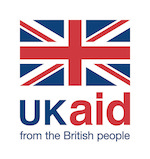Global displacement has topped 70 million, with an average of 37,000 new displacements every day. The rate of overall growth in displacement continues to exceed the rate at which solutions are being found for people affected by crises.
For refugees, the best solution is being able to return home voluntarily with safety and dignity. Yet this is rarely an option, as four out of every five refugees are in displacement situations that have lasted for at least five years, and one in five are in situations that have lasted over 20 years.
What role can mobile technology play for displaced populations?
Although mobile technology is by no means a solution to displacement, it can improve refugees’ lives by enhancing the delivery of dignified aid and/or by helping people become more self-sufficient. Mobile connectivity can improve access to financial services, utilities (notably energy), and identity services, as well as information to improve food security.
There are pockets of information already available about how refugees are using mobile phones and the barriers they face to digital and financial inclusion. However, more robust evidence is needed to understand their digital needs and preferences, how they are currently accessing and using mobile technology, and the barriers they encounter.
Bolstering the evidence base – new GSMA research launches today
The GSMA, in partnership with UNHCR, conducted research in three humanitarian contexts (urban settings in Jordan, Kiziba camp, Rwanda and Bidi Bidi settlement, Uganda) hosting large refugee populations, to provide crucial data and evidence to help MNOs and humanitarian organisations design and build inclusive digital interventions.
A range of methodological approaches were employed, including nearly 3,000 survey interviews and 55 focus group discussions.
Mobile technology access, use and barriers across three contexts:
The report begins with a snapshot of refugees’ access, use and barriers to mobile technology in each context, building a foundation for subsequent chapters on thematic areas.
- Over two-thirds of refugees in all three research locations are active mobile phone users, with the highest proportion in Jordan.
- Refugees access mobile services in creative ways depending on their context: sharing or borrowing handsets and owning multiple SIMs. For those who do not own handsets, borrowing is an important way of getting connected.
- The most commonly used mobile services among active users in all three research locations are making calls and using SMS services. Mobile money is one of the top three mobile use cases in Kiziba and Bidi Bidi, where 59 per cent and 44 per cent of refugees use mobile money, respectively.
- Awareness of mobile internet is high, but only about a third of respondents in Bidi Bidi and Kiziba have used it. The findings also indicate that refugees would like to use mobile internet more than they are currently able to.
- Affordability, literacy and digital skills, and charging are the main barriers to mobile phone ownership and mobile internet use in all contexts.
Mobile technology use cases – five themes
Further key findings are categorised under five themes:
- Gender and inclusivity;
- Mobile financial services
- Mobile-enabled utilities;
- Digital identity; and
- Food security and climate change.
Over the next few months, we’ll be spotlighting findings from each theme through an upcoming blog series. Our latest video shares a snapshot of the findings.
A shift towards mobile-enabled services for refugees
Humanitarian services are increasingly digitising and mobile phone penetration and use among refugees is growing. The transition to mobile-based services can offer significant protection dividends and other wide-ranging benefits for refugees who are digitally literate, have the means to be digitally included (such as appropriate ID) and can access and engage with mobile services effectively.
However, the data shows significant mobile gender and disability gaps – signalling that without collaborative action from humanitarian organisations and MNOs to design and build inclusive digital interventions, existing inequalities in refugee populations may be exacerbated and deny the life-enhancing opportunities of mobile to the most vulnerable.
There is an important role for MNOs in this transition in ensuring that products and services are tailored to the needs of different demographic groups. This is an opportunity to serve new customers who are currently unconnected and underserved. For instance, if the mobile ownership gap was closed in Bidi Bidi, an additional 15,500 women would own a phone.
What should stakeholders do with these findings?
It is important to structure the transition to mobile-based services to prioritise equity. The report concludes with considerations for humanitarian organisations, MNOs and policymakers for how this can be achieved, categorising recommendations into three key focus areas: affordability, usability and availability.
Our upcoming blog series will further unpack these challenges and opportunities, and we look forward to sharing our insights with you. We are launching this report today at Mobile 360 Series – Africa in Kigali, and in Kampala and Bidi Bidi, alongside UNHCR, next week (22nd and 25th July). Let us know if you’d like to attend the Uganda launches!
Make sure you follow us and subscribe to our newsletter to stay up to date.



